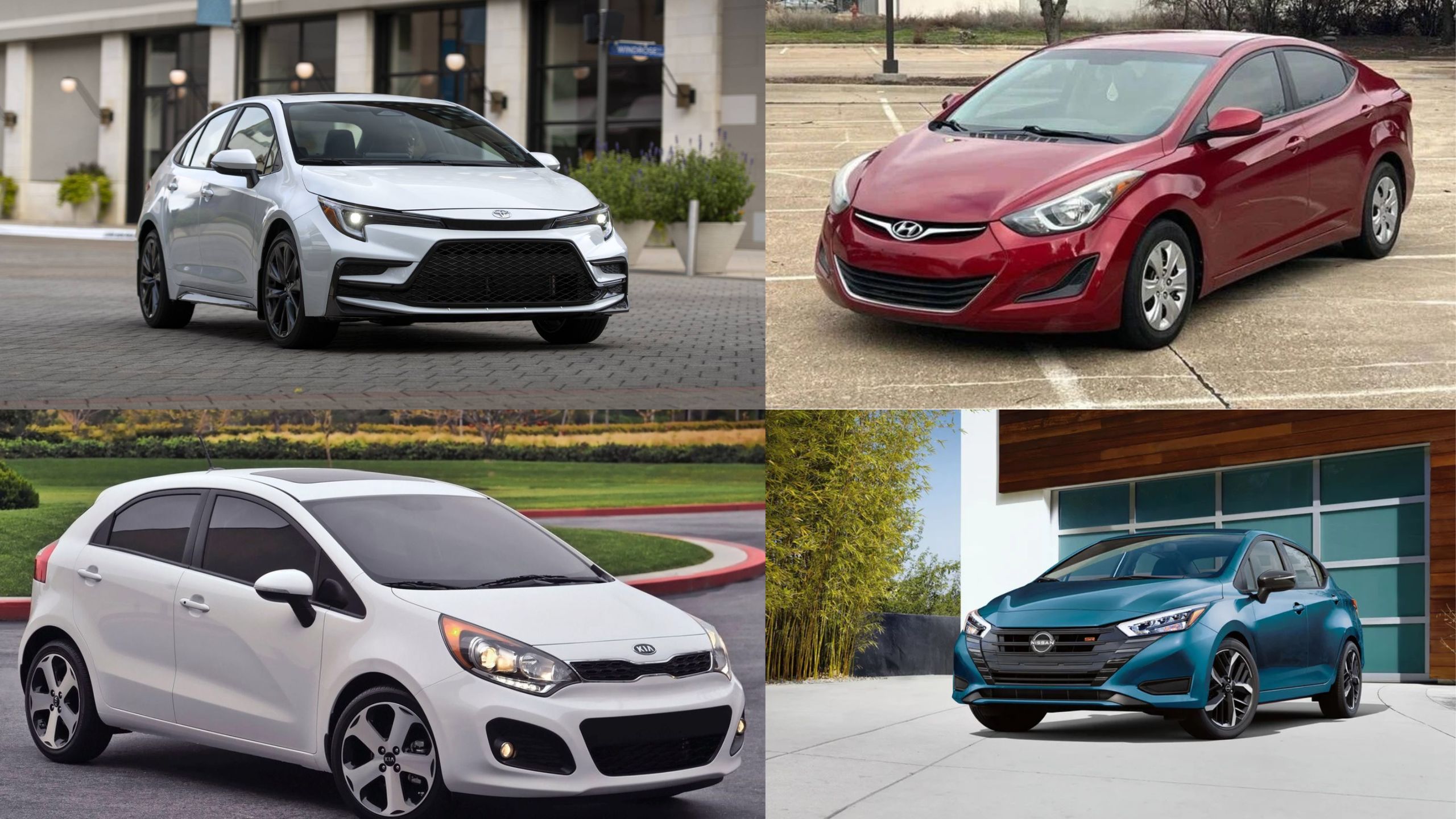In today’s economy, the cost of owning a vehicle extends far beyond the purchase price. Fuel expenses represent a significant portion of a vehicle’s lifetime cost, making fuel efficiency an essential factor for budget-conscious shoppers.
As gas prices continue to fluctuate, choosing a fuel-efficient vehicle can lead to substantial savings over time. Conversely, selecting a gas-guzzler might leave you with perpetual pain at the pump.
The market offers numerous affordable options ranging from compact sedans to small SUVs and crossovers, but their fuel economy varies dramatically.
While some budget-friendly vehicles deliver impressive mileage that rivals luxury hybrids, others drain your tank and wallet at an alarming rate.
This guide explores five budget-friendly cars that excel in fuel efficiency and five that disappoint despite their attractive purchase prices. We’ll examine their real-world fuel economy, price points, and value proposition to help you make an informed decision.
Whether you’re a daily commuter, weekend traveler, or somewhere in between, understanding how these vehicles perform at the pump could save you thousands over your car’s lifetime.
5 Budget Cars That Save on Gas
These economical vehicles combine affordable purchase prices with impressive fuel efficiency, making them ideal for budget-conscious drivers looking to minimize trips to the pump.
From compact city cars to practical hybrids, these models deliver excellent mileage without sacrificing reliability or comfort.
1. Toyota Corolla Hybrid
The Toyota Corolla Hybrid stands as a testament to Toyota’s mastery of hybrid technology while maintaining affordability.
With a starting MSRP around $22,800, this compact sedan delivers an impressive EPA-estimated 53 mpg in city driving and 52 mpg on highways, rivaling numbers typically reserved for more expensive hybrid models.
The Corolla Hybrid achieves this efficiency through its refined 1.8-liter four-cylinder engine paired with Toyota’s time-tested hybrid system. The powertrain smoothly transitions between electric and gasoline power, often running solely on electric power during low-speed city driving, where conventional cars are least efficient.
Its regenerative braking system recaptures energy that would otherwise be lost, converting it to electricity to recharge the battery.
Beyond fuel economy, the Corolla Hybrid offers remarkable value with standard features including Toyota Safety Sense 2.0 (a comprehensive suite of driver assistance technologies), an 8-inch touchscreen with Apple CarPlay and Android Auto integration, and automatic climate control.
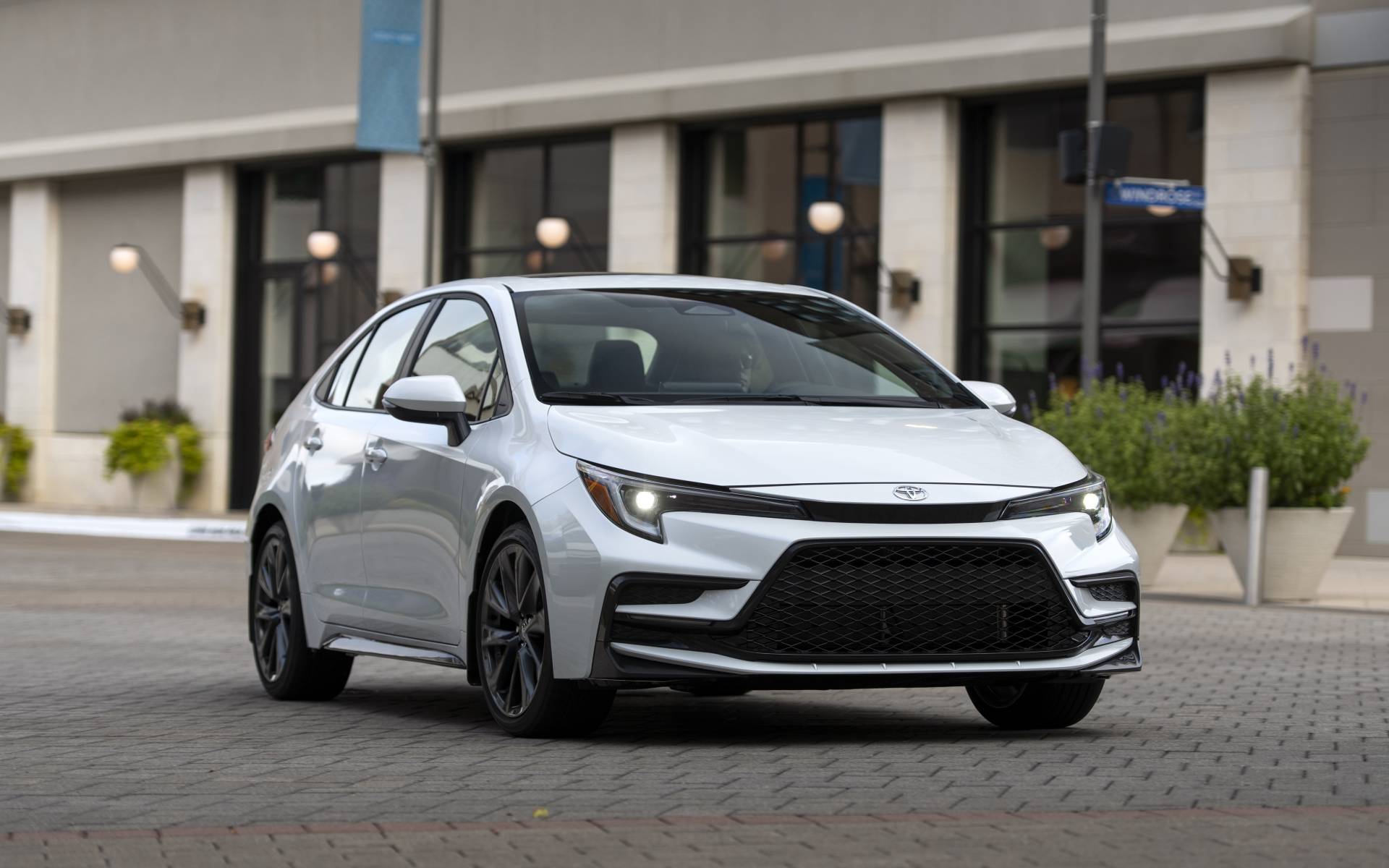
The interior, while not luxurious, provides comfortable seating for five and surprisingly spacious rear accommodations for a compact vehicle. Maintenance costs further enhance its budget-friendly appeal.
The hybrid system is designed for longevity, with the battery warranty extending to 10 years or 150,000 miles in most states. The regenerative braking system reduces wear on conventional brake components, potentially saving hundreds in brake service over the vehicle’s lifetime.
For budget-conscious buyers, the math becomes compelling when considering the long-term savings.
Assuming an average annual driving distance of 15,000 miles and comparing to a conventional compact car averaging 30 mpg, the Corolla Hybrid could save approximately $600-800 annually in fuel costs at current gas prices, potentially recouping the hybrid premium within three years of ownership while offering lower emissions and a smoother driving experience.
2. Hyundai Elantra
The Hyundai Elantra has evolved from merely being an economy car to a sophisticated compact sedan that delivers exceptional fuel efficiency without sacrificing style or features.
With a starting price around $20,500, the standard non-hybrid Elantra achieves an impressive EPA-estimated 33 mpg city and 42 mpg highway with its base 2.0-liter four-cylinder engine when equipped with the Intelligent Variable Transmission (IVT).
Hyundai achieves this efficiency through several engineering innovations. The Elantra employs a Smartstream engine with dual-port injection and advanced valve timing that optimizes combustion efficiency.
The IVT transmission operates more efficiently than traditional automatic transmissions by mimicking the behavior of a continuously variable transmission while avoiding the droning effect common to CVTs.
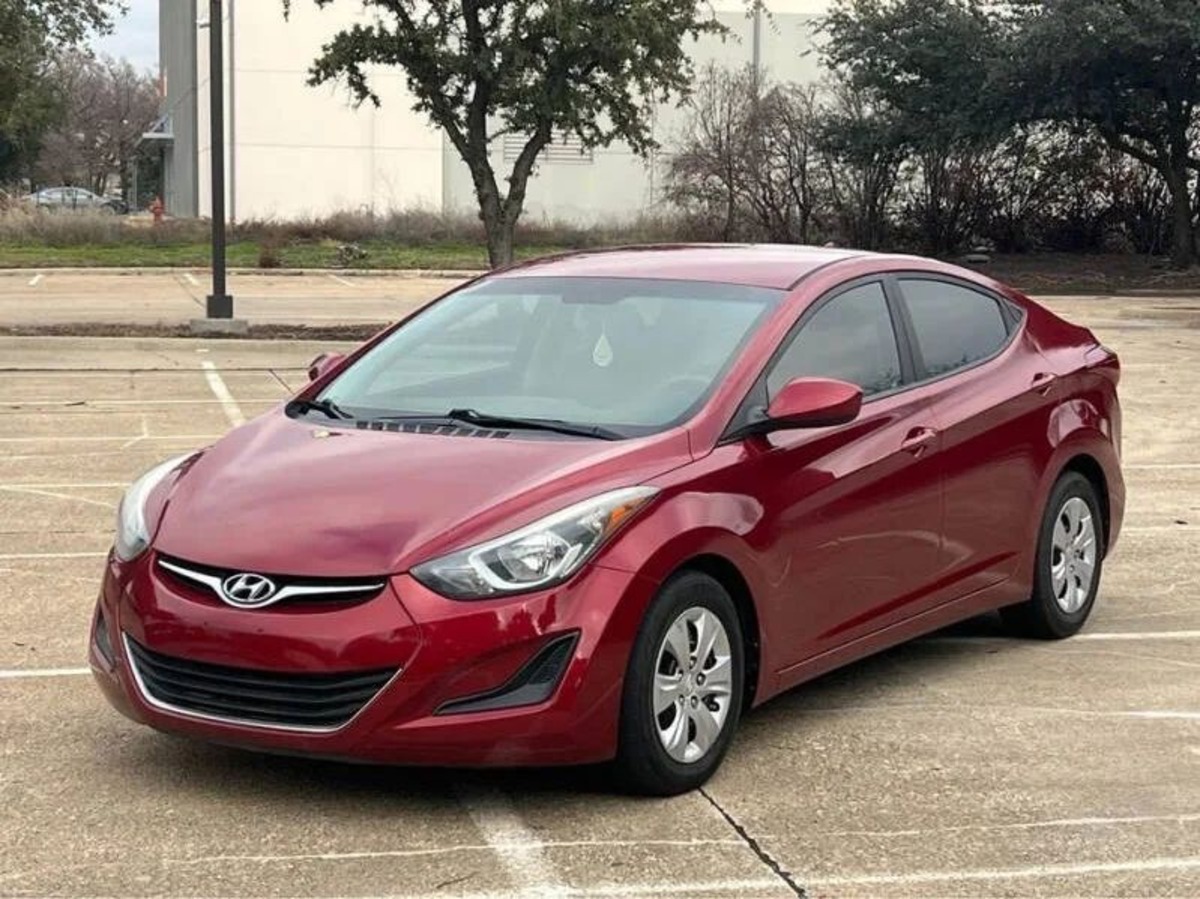
Additionally, an active air flap system in the grille reduces aerodynamic drag at highway speeds, contributing to its impressive highway fuel economy figure.
The value proposition extends beyond fuel efficiency. Every Elantra comes standard with an 8-inch touchscreen infotainment system, wireless Apple CarPlay and Android Auto compatibility, and Hyundai’s comprehensive SmartSense safety suite that includes forward collision avoidance with pedestrian detection, lane keeping assist, and driver attention warning.
What truly sets the Elantra apart from competitors is Hyundai’s industry-leading warranty coverage. The 10-year/100,000-mile powertrain warranty and 5-year/60,000-mile new vehicle warranty significantly reduce ownership costs and provide peace of mind for budget-conscious buyers considering long-term ownership.
While the Elantra’s interior materials reflect its budget-friendly price point, thoughtful design touches like the driver-oriented dashboard and ergonomic controls create a modern, upscale atmosphere that punches above its weight class.
The 14.2-cubic-foot trunk capacity also exceeds many competitors, adding practical utility without compromising the aerodynamic profile that contributes to its excellent fuel economy.
3. Kia Rio
The Kia Rio represents one of the most affordable entries into new car ownership while delivering remarkably good fuel economy.
With a starting price under $17,000, this subcompact sedan achieves an EPA-estimated 33 mpg in city driving and 41 mpg on highways when equipped with its standard 1.6-liter four-cylinder engine and intelligent variable transmission.
The Rio’s efficiency stems from its lightweight construction and optimized powertrain. Weighing approximately 2,700 pounds, it requires less energy to accelerate and maintain speed than larger competitors.
Kia engineers have refined the 1.6-liter engine with multi-point injection and dual continuously variable valve timing to extract maximum efficiency without resorting to costlier technologies like direct injection or turbocharging that would push the Rio beyond its budget-friendly price point.
Despite its affordability, the Rio avoids feeling like a penalty box. The interior features surprisingly good fit and finish with intuitive controls and an available 8-inch touchscreen with wireless Apple CarPlay and Android Auto compatibility.
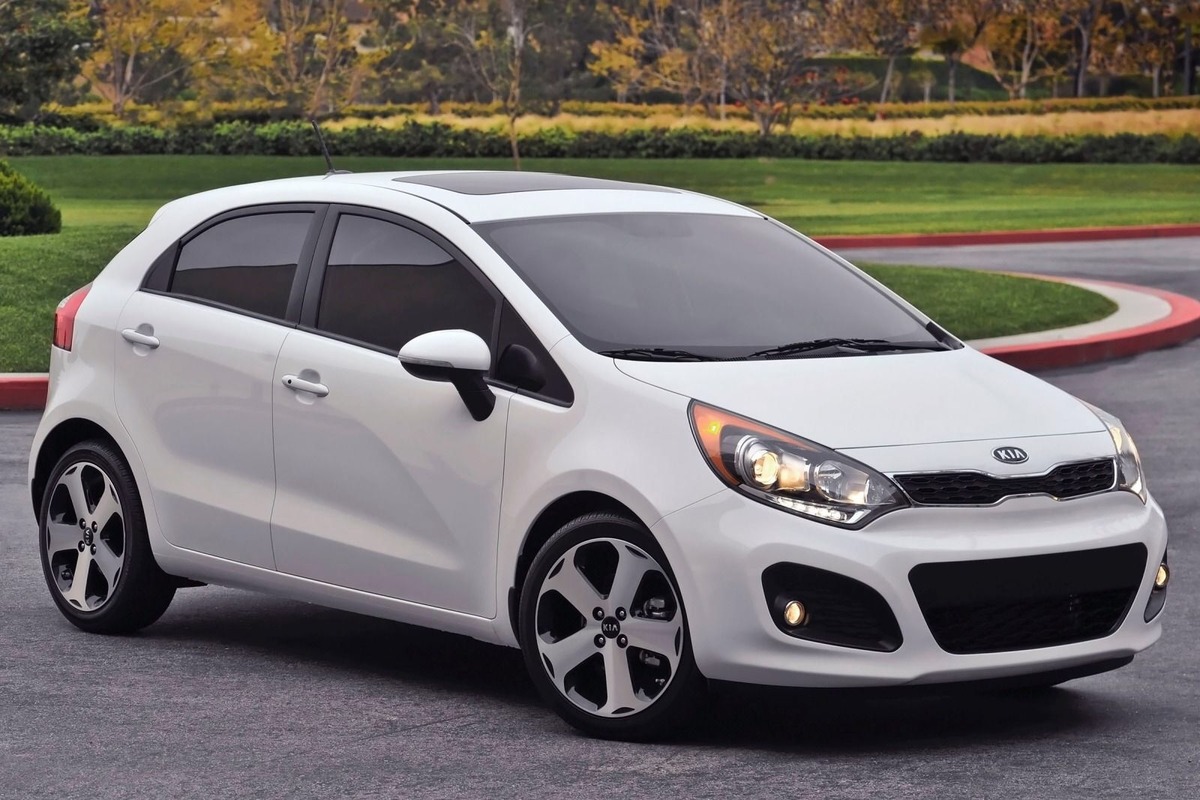
The front seats provide good comfort for daily commuting, though rear seat accommodations reflect the vehicle’s subcompact dimensions. Maintenance costs further enhance the Rio’s budget credentials.
Its conventional powertrain with proven components typically results in lower repair costs compared to more complex engines. The timing chain design (versus a timing belt) eliminates a significant periodic maintenance expense common to many economy cars.
Perhaps most impressive about the Rio is its ability to maintain excellent fuel economy in real-world driving. While many vehicles struggle to match their EPA estimates, Rio owners frequently report meeting or exceeding the official figures, particularly in highway scenarios.
This translates to a real-world operating cost around 10-12 cents per mile for fuel alone, among the lowest of any non-hybrid vehicle available today.
For urban dwellers, the Rio offers additional practical advantages. Its compact dimensions make it easy to maneuver in tight city traffic and park in limited spaces.
Combined with its excellent fuel economy in stop-and-go conditions, the Rio proves particularly economical for city-centric lifestyles while maintaining highway capabilities for occasional longer journeys.
4. Nissan Versa
The Nissan Versa has evolved from a bare-bones economy car to a surprisingly refined subcompact sedan that delivers excellent fuel efficiency at a compelling price point.
Starting around $15,980, the Versa achieves an EPA-estimated 32 mpg city and 40 mpg highway when equipped with its continuously variable transmission (CVT), making it one of the most fuel-efficient non-hybrid options in its class.
Powering the Versa is a naturally aspirated 1.6-liter four-cylinder engine producing 122 horsepower. While modest on paper, this powertrain proves adequately responsive for urban driving while prioritizing efficiency.
Nissan’s latest generation CVT deserves particular credit for the Versa’s economy. Unlike earlier CVTs that often sacrificed drivability for efficiency, the current transmission offers more natural-feeling “step” points that mimic conventional automatic transmissions while maintaining the fuel-saving benefits of the continuously variable design.
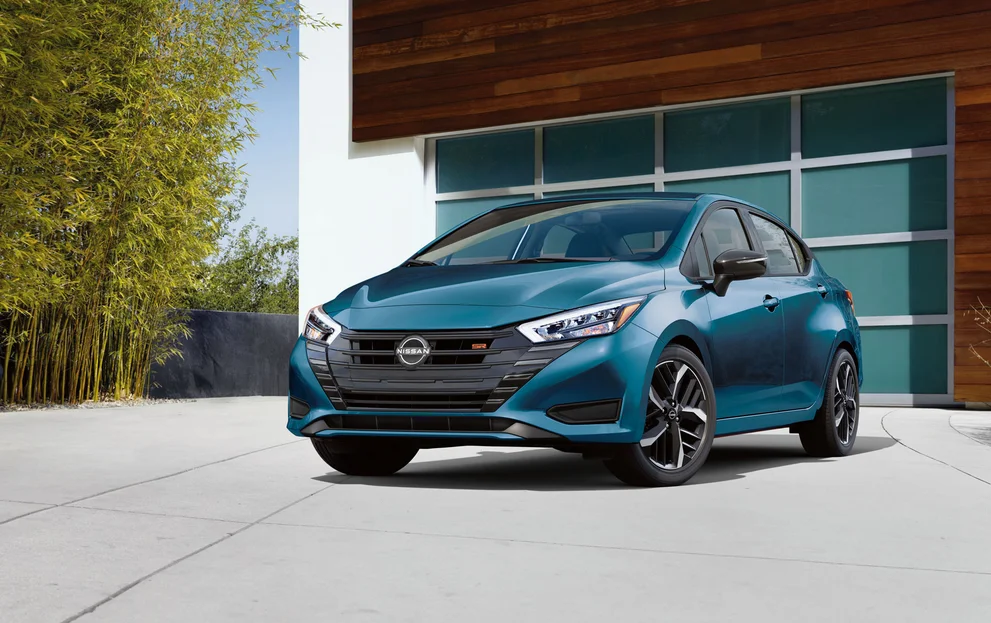
The Versa’s efficiency extends beyond its powertrain. Aerodynamic refinements, including an active grille shutter and underbody panels, help reduce drag at highway speeds.
Lightweight high-strength steel in its construction keeps curb weight reasonable without compromising safety, requiring less energy to accelerate and maintain speed.
Inside, the Versa defies expectations for its price segment. The well-designed dashboard features intuitive controls and surprisingly good material quality for the price point. Standard features include a 7-inch touchscreen, Bluetooth connectivity, and three USB ports.
Safety equipment is another highlight, with automatic emergency braking, lane departure warning, and rear automatic braking available, features often reserved for more expensive vehicles.
Perhaps most impressive about the Versa is its interior volume. Despite its subcompact classification, it offers 14.7 cubic feet of trunk space (more than some midsize sedans) and reasonably comfortable accommodations for four adults.
This practical packaging makes the Versa a viable option for small families or ride-share drivers seeking to maximize fuel economy without sacrificing passenger comfort or cargo capacity.
For budget-conscious buyers, the Versa makes a compelling financial case beyond purchase price and fuel savings.
It is straightforward engineering typically results in lower maintenance costs compared to turbocharged competitors, and Nissan’s improvement in reliability ratings in recent years suggests better long-term ownership costs than previous generations.
Also Read: 5 Compact Cars That Endure City Driving and 5 That Break Too Fast
5. Mitsubishi Mirage
The Mitsubishi Mirage stands as one of the most fuel-efficient non-hybrid vehicles available in North America.
With a starting price around $14,645, this subcompact hatchback achieves an impressive EPA-estimated 36 mpg in city driving and 43 mpg on highways when equipped with its continuously variable transmission (CVT), numbers that approach hybrid-level efficiency without the associated technology costs.
The Mirage achieves this remarkable fuel economy through a combination of lightweight construction and a small-displacement engine. Weighing just under 2,100 pounds, it’s one of the lightest four-door vehicles sold in the U.S. market.
Power comes from a 1.2-liter three-cylinder engine producing a modest 78 horsepower, a figure that prioritizes efficiency over performance. While acceleration is leisurely by modern standards, the powertrain proves adequate for urban environments where fuel savings matter most.
Beyond its headline fuel economy figures, the Mirage offers practical advantages for budget-conscious buyers. Its small footprint makes it extraordinarily easy to park in tight urban spaces, while the hatchback design provides surprising versatility with 17.1 cubic feet of cargo space behind the rear seats, expanding to 47 cubic feet with seats folded.
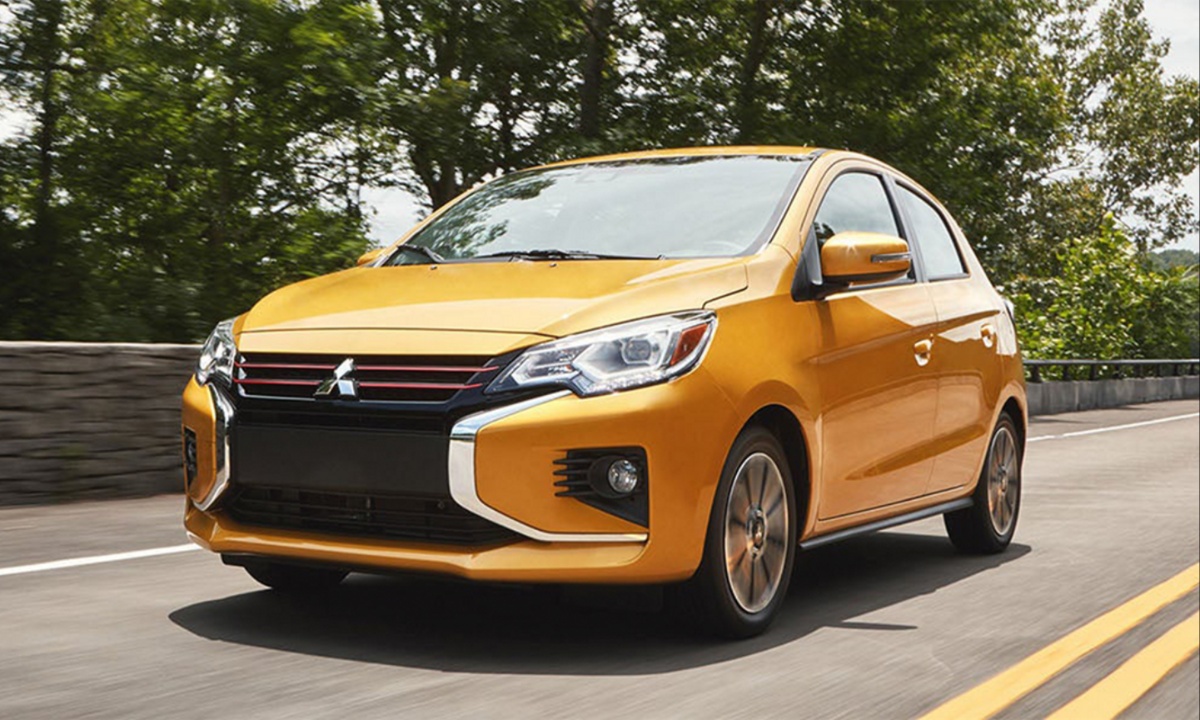
Standard features include a 7-inch touchscreen with Apple CarPlay and Android Auto compatibility, automatic climate control, and forward collision mitigation equipment that would have been considered premium just a few years ago.
Mitsubishi’s warranty package further enhances the Mirage’s value proposition. The 10-year/100,000-mile powertrain warranty and 5-year/60,000-mile new vehicle limited warranty provide peace of mind for long-term ownership, potentially saving thousands in repair costs compared to competitors with shorter coverage periods.
Where the Mirage shows its budget roots is in its driving dynamics and interior refinement. Road and engine noise are more pronounced than in pricier competitors, and interior materials prioritize durability over aesthetics.
However, for buyers focused primarily on minimizing transportation costs, these compromises may be entirely acceptable given the substantial ongoing savings at the fuel pump.
The math becomes particularly compelling when considering the total cost of ownership. Assuming 15,000 miles driven annually with current gas prices, a Mirage owner might spend $900-1,100 less on fuel each year compared to the average compact sedan.
Combined with its low purchase price, minimal depreciation, and comprehensive warranty, the Mirage represents one of the lowest-cost new vehicle ownership experiences available today despite its limitations in refinement and performance.
5 Budget Cars That Make Gas Expenses Worse
While budget-friendly at purchase, these five deceptively costly vehicles quickly drain your wallet at the pump through poor fuel efficiency and outdated technology.
Don’t let the affordable sticker price fool you; these seemingly economical options will leave you making frequent, expensive trips to the gas station for years to come.
1. Dodge Charger (V8 Models)
The Dodge Charger SXT and GT variants, despite their entry-level positioning in the Charger lineup with starting prices between $32,500 and $36,000, represent budget performance rather than budget efficiency. When equipped with the 3.6-liter V6 engine, these models achieve a mediocre EPA-estimated 19 mpg city and 30 mpg highway.
However, many buyers are lured toward the more powerful R/T trim with its 5.7-liter HEMI V8, which starts around $40,900 and delivers a thirsty 16 mpg city and 25 mpg highway.
The Charger’s fuel economy challenges stem from multiple factors. Its hefty curb weight, exceeding 4,000 pound,s requires substantial energy to accelerate.
The performance-oriented gearing prioritizes responsiveness over efficiency, keeping the engine at higher RPMs where fuel consumption increases dramatically. Additionally, the Charger’s bold, muscular styling creates aerodynamic drag that becomes increasingly problematic at highway speeds.
Inside, the Charger offers spacious accommodations for five adults and a generous 16.5 cubic feet of trunk space, making it practical as a family sedan.
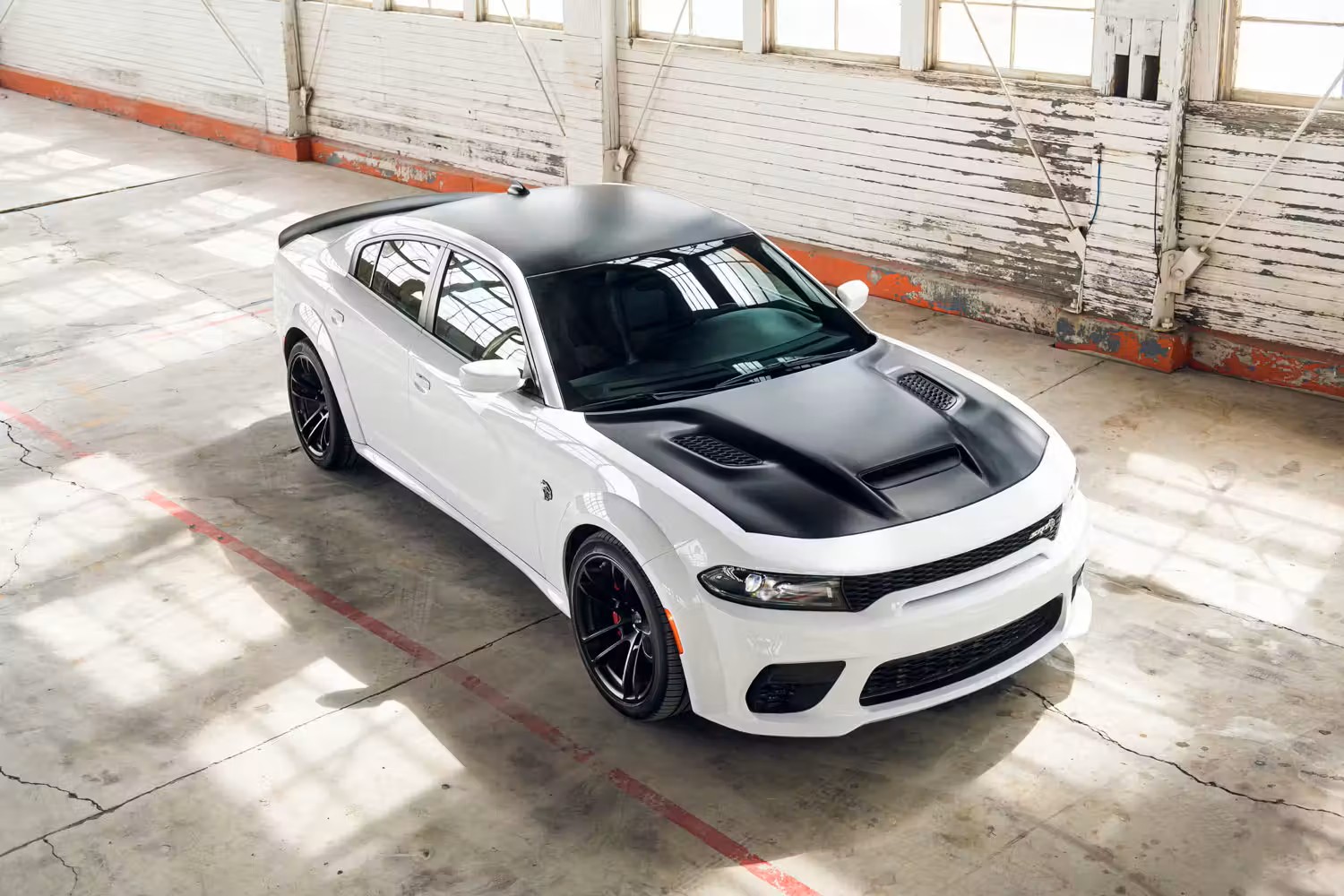
Standard features include a 7-inch touchscreen with smartphone integration, power-adjustable driver’s seat, and keyless entry. However, these practical aspects mask a vehicle that prioritizes performance characteristics over economy.
The real impact becomes apparent in real-world ownership costs. A Charger R/T driven 15,000 miles annually will consume approximately 680 gallons of fuel (requiring premium grade for optimal performance), compared to about 380 gallons for a typical midsize sedan.
At current fuel prices, this difference represents an additional $1,200-1,500 annually in fuel costs alone. Over a five-year ownership period, the Charger could cost $6,000-7,500 more in fuel than more efficient alternatives.
Maintenance costs compound these expenses. The HEMI V8 requires more frequent oil changes with higher-grade synthetic oil. The performance-oriented brake components wear faster and cost more to replace.
Even tire expenses increase substantially, as the Charger’s performance-oriented tires typically cost more and wear faster than standard touring tires.
For buyers seduced by the Charger’s bold styling and powerful engines, these additional expenses may seem worthwhile for the driving experience.
However, for those seeking truly budget-friendly transportation, the Charger represents a significant ongoing financial commitment disguised as an accessible entry point to American muscle car ownership.
2. Chevrolet Trailblazer
The Chevrolet Trailblazer represents a paradox in the subcompact SUV segment. With a starting price around $22,100, it positions itself as an affordable entry into the crossover market. However, its fuel economy figures tell a different story about long-term operating costs, especially when equipped with all-wheel drive.
The front-wheel-drive Trailblazer with the 1.3-liter turbocharged three-cylinder engine and CVT transmission achieves an EPA-estimated 29 mpg city and 33 mpg highway, reasonable but not exceptional figures for its class.
However, the popular all-wheel-drive configuration with the same engine paired with a 9-speed automatic transmission drops significantly to 26 mpg city and 30 mpg highway. These numbers lag behind similarly sized competitors, some of which achieve 3-5 mpg better across both metrics.
The Trailblazer’s efficiency challenges stem from several factors. Despite its small displacement, the turbocharged engine requires premium fuel for optimal performance, immediately increasing fuel costs by 20-30 cents per gallon compared to regular-grade options.
The vehicle’s somewhat boxy design prioritizes interior space and styling over aerodynamic efficiency, creating more drag at highway speeds. Additionally, at approximately 3,300 pounds, the Trailblazer carries more weight than some competitors, requiring more energy to accelerate and maintain speed.
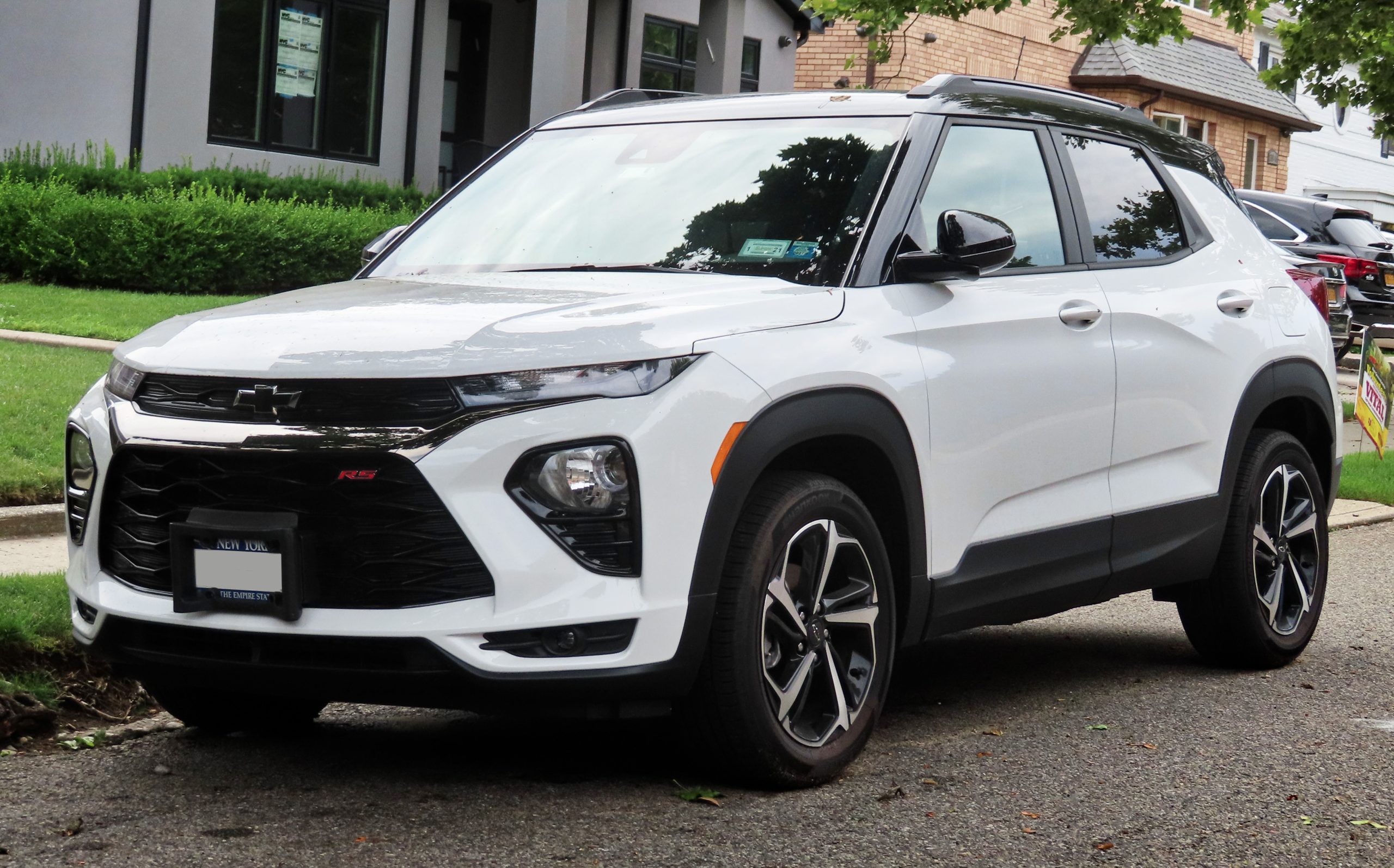
Inside, the Trailblazer offers 25.3 cubic feet of cargo space behind the rear seats and 54.4 cubic feet with seats folded – respectable figures that highlight its practical advantages.
Standard features include a 7-inch touchscreen with wireless Apple CarPlay and Android Auto compatibility, automatic emergency braking, and lane-keeping assist. These amenities create an initially appealing value proposition that masks its higher operating costs.
The real impact becomes evident in ownership calculations. Assuming 15,000 annual miles with a 60/40 split between city and highway driving, an AWD Trailblazer will consume approximately 536 gallons of premium fuel annually.
A more efficient competitor using regular fuel might consume 440 gallons. At current fuel prices, this difference represents an additional $600-700 annually potentially $3,000-3,500 over five years of ownership.
While the Trailblazer offers attractive styling, good technology integration, and competitive cargo capacity, its below-average fuel economy and premium fuel requirement significantly erode its budget-friendly credentials.
Prospective buyers should carefully consider whether its design and feature advantages outweigh the substantial lifetime fuel premium compared to more efficient alternatives in the increasingly competitive subcompact crossover segment.
3. Jeep Renegade
The Jeep Renegade entices budget-minded SUV shoppers with its distinctive styling, legendary Jeep brand heritage, and relatively accessible starting price of around $24,695.
However, beneath its charming, boxy exterior lies a vehicle that demands considerable ongoing investment at the fuel pump, particularly when equipped with all-wheel drive.
The front-wheel-drive Renegade with its standard 1.3-liter turbocharged four-cylinder engine and 9-speed automatic transmission achieves an EPA-estimated 24 mpg city and 32 mpg highway figures that already trail most competitors in the subcompact crossover segment.
Opt for the more popular all-wheel-drive configuration (a choice many make given the Jeep’s off-road positioning), and those numbers drop further to 23 mpg city and 29 mpg highway.
Several factors contribute to the Renegade’s thirsty nature. Its upright, boxy design creates substantial aerodynamic drag that becomes particularly problematic at highway speeds.
The 9-speed automatic transmission, while offering theoretical efficiency benefits with its wide gear spread, has been criticized for hunting between gears and not always selecting the optimal ratio for efficiency.
Additionally, the Renegade’s curb weight approaches 3,500 pounds, considerably heavier than many competitors despite its small footprint.
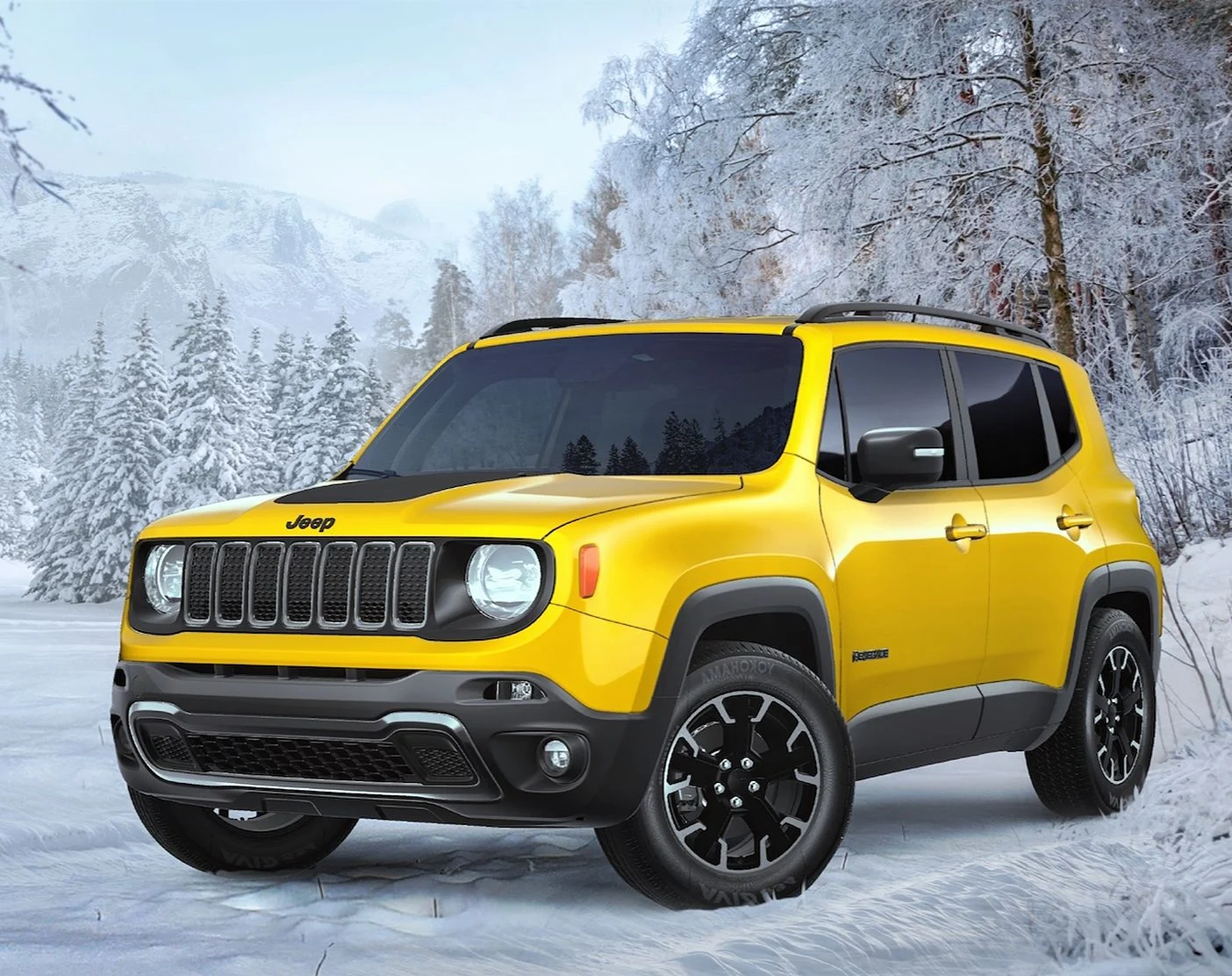
The turbocharged engine requires premium fuel for optimal performance, adding approximately 20-30 cents per gallon compared to regular-grade options. This requirement alone increases annual fuel costs by $150-200 for typical driving patterns.
Combined with its lower efficiency, a Renegade owner might spend $700-900 more annually on fuel compared to more efficient alternatives in the segment. Interior accommodations further complicate the Renegade’s value equation.
While the cabin features charming design elements and good headroom thanks to its tall roof, rear seat legroom and cargo capacity are modest.
The standard 8.4-inch touchscreen infotainment system with smartphone integration and available features like heated seats create an initially appealing package, but these amenities come at a premium compared to competitors that offer similar features with better fuel economy.
For buyers who regularly utilize the Renegade’s off-road capabilities, such as the Trailhawk trim with its enhanced ground clearance and protective skid plates, the fuel economy penalty might seem a reasonable trade-off.
However, market research suggests the vast majority of Renegade owners rarely venture beyond paved roads, making its inefficiency a poor value proposition for typical urban and suburban driving scenarios.
4. Nissan Kicks
The Nissan Kicks presents a deceptive case in the subcompact crossover segment. With a starting price around $20,290 and EPA fuel economy ratings of 31 mpg city and 36 mpg highway, it appears to offer good efficiency on paper.
However, real-world driving experiences and ownership costs tell a different story, making it potentially problematic for truly budget-conscious shoppers.
Powered by a naturally aspirated 1.6-liter four-cylinder engine producing 122 horsepower paired with a continuously variable transmission (CVT), the Kicks suffers from significant performance limitations.
The underpowered engine struggles to maintain speed on hills and during highway passing maneuvers, frequently requiring full-throttle operation that dramatically increases real-world fuel consumption compared to EPA estimates.
Numerous owner reports and independent testing indicate actual fuel economy typically falls 3-5 mpg below the advertised figures, particularly in situations requiring moderate acceleration or climbing.
The CVT transmission compounds these issues. While theoretically efficient, the transmission’s programming often holds the engine at high RPMs during acceleration or when maintaining speed on inclines, creating excessive noise and increased fuel consumption.
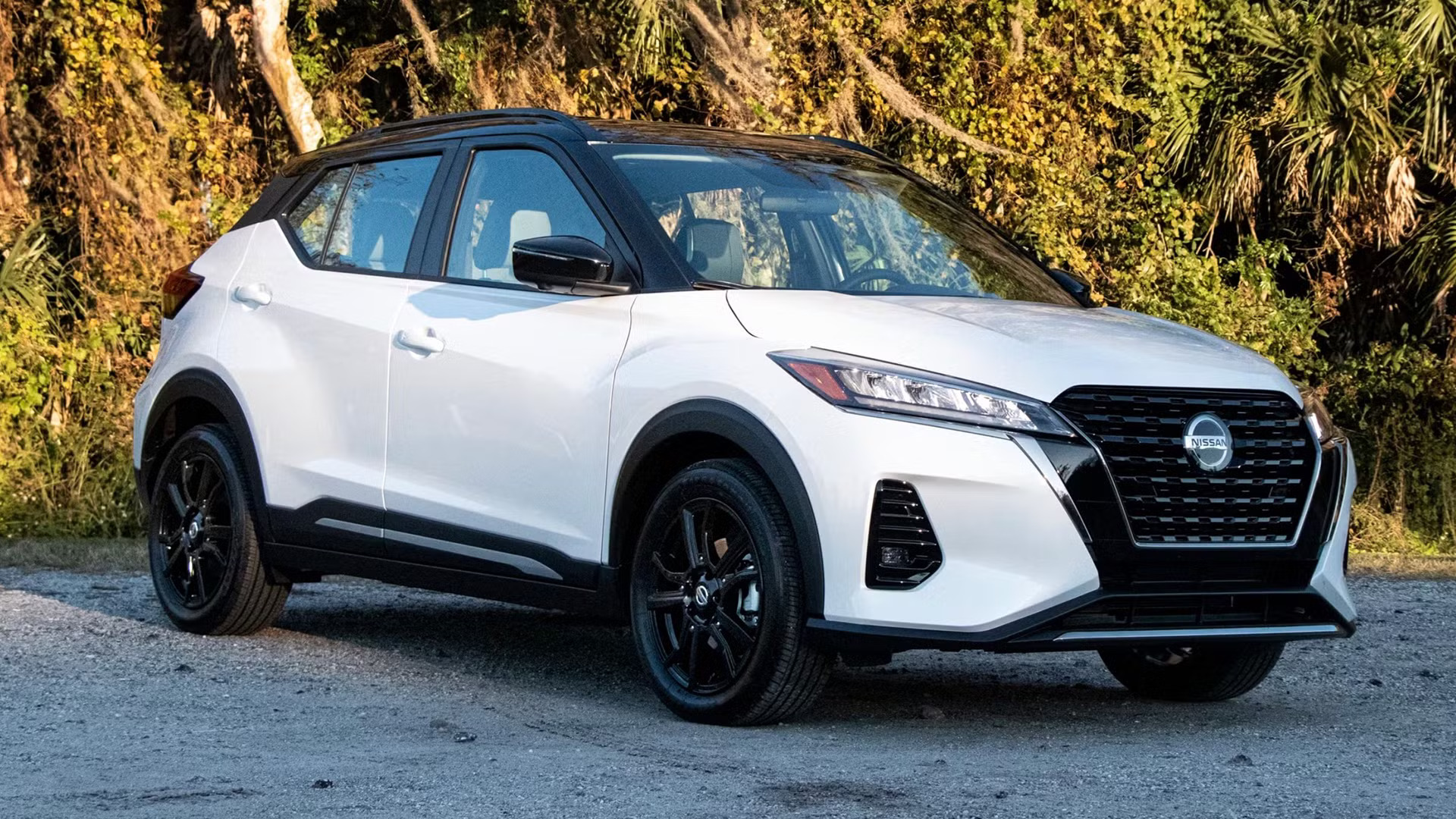
This behavior is particularly pronounced when the vehicle is loaded with passengers or cargo, further diminishing real-world efficiency. Unlike many competitors that offer all-wheel drive as an option, the Kicks is exclusively front-wheel drive.
While this simplifies the drivetrain and reduces weight, it limits versatility in adverse weather conditions and forces some buyers to choose heavier, less efficient alternatives when all-weather capability is a requirement.
Interior quality represents another area where the Kicks shows its budget origins. Hard plastics dominate the cabin, and sound insulation is minimal, creating a driving environment where engine noise becomes increasingly intrusive as the powertrain works harder to maintain performance.
Standard features include a 7-inch touchscreen, automatic emergency braking, and cloth seats, though achieving comfort features like heated seats requires moving to higher trim levels that approach $25,000.
The true cost impact emerges when considering long-term ownership. Beyond the fuel economy shortfall, the stressed engine operating consistently near its performance limits potentially faces accelerated wear.
The CVT transmission has demonstrated reliability concerns in other Nissan applications, potentially leading to expensive repairs outside the warranty period.
Additionally, the vehicle’s modest performance capabilities encourage a driving style that further reduces efficiency as drivers compensate by maintaining momentum through earlier acceleration and later braking.
5. Ford EcoSport
The Ford EcoSport represents one of the most misleading vehicle names in the modern automotive world. Despite the “Eco” prefix suggesting environmental friendliness and efficiency, this subcompact crossover delivers some of the poorest fuel economy figures in its class.
With a starting price around $22,040 before discontinuation (remaining as new old stock at many dealerships), the EcoSport fails to deliver on its implicit promise of economical operation.
The front-wheel-drive EcoSport equipped with the 1.0-liter three-cylinder turbocharged EcoBoost engine and 6-speed automatic transmission achieves an EPA-estimated 27 mpg city and 29 mpg highway figures that trail nearly every competitor in the segment by a significant margin.
Opt for the all-wheel-drive version with the 2.0-liter four-cylinder engine, and those numbers drop further to 23 mpg city and 29 mpg highway. Several engineering factors contribute to the EcoSport’s poor efficiency.
Despite its small size, it weighs approximately 3,300 pounds, several hundred pounds heavier than many competitors. The dated 6-speed automatic transmission lacks the efficiency advantages of newer 8-speed, 9-speed, or CVT transmissions common in the segment.
Additionally, the EcoSport’s tall, boxy shape creates substantial aerodynamic drag, particularly problematic at highway speeds. The real-world fuel economy often falls short of even these modest EPA estimates.
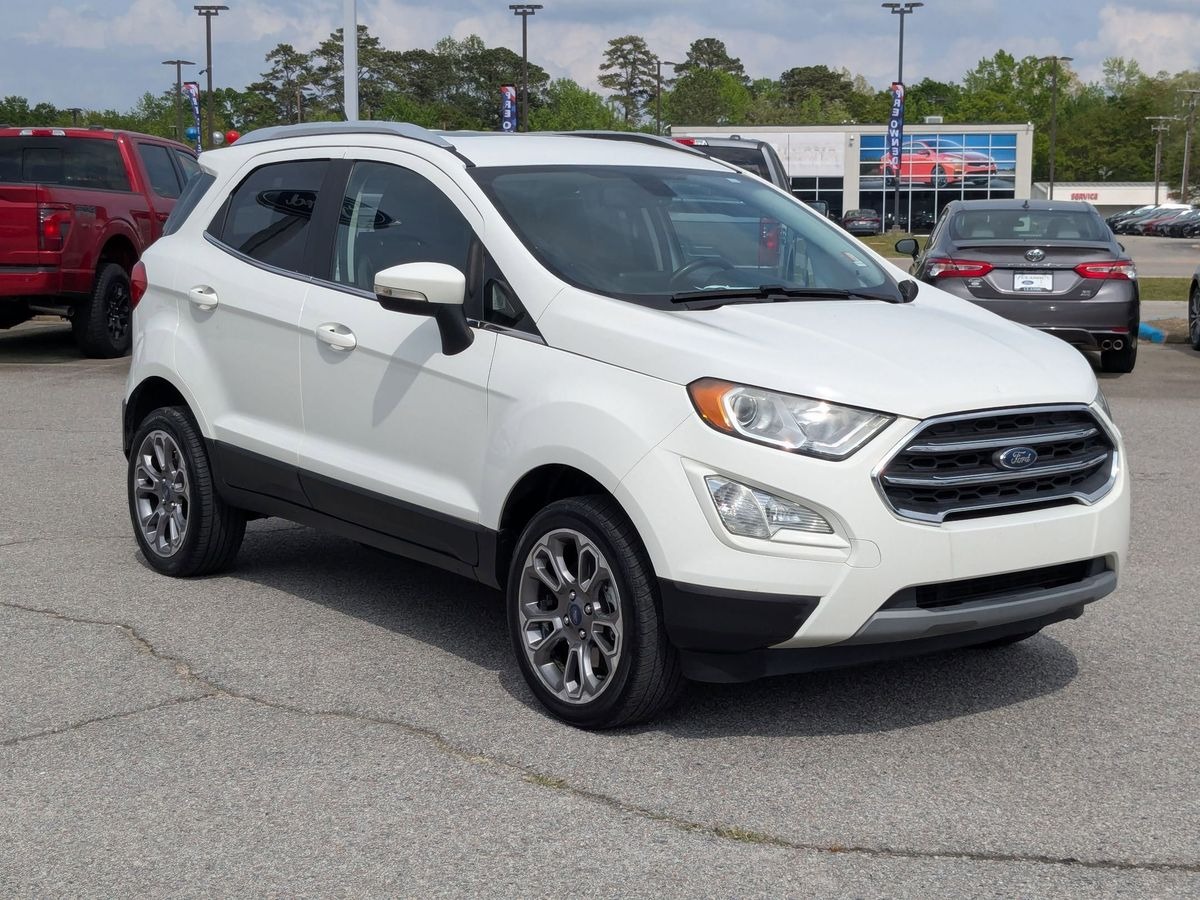
The small-displacement turbocharged engine frequently operates under boost to deliver adequate acceleration, increasing actual fuel consumption.
The all-wheel-drive system, while providing additional traction, adds weight and drivetrain friction that further reduces efficiency without providing the off-road capability of more purpose-built alternatives.
Inside, the EcoSport offers limited passenger space even by subcompact standards. Rear seat accommodations prove tight for adults, and cargo capacity with all seats in use is modest at 20.9 cubic feet.
The side-hinged rear cargo door, while distinctive, proves impractical in tight parking situations compared to the conventional top-hinged hatches used by competitors.
The financial impact becomes clear when examining ownership costs. An EcoSport driven 15,000 miles annually will consume approximately 555 gallons of fuel (assuming the more efficient FWD model and a 60/40 city/highway split).
A more efficient competitor might use 440-480 gallons for the same distance. At current fuel prices, this difference represents an additional $400-500 annually or $2,000-2,500 over five years, effectively negating any initial purchase price advantage the EcoSport might offer.
Despite including some modern features like an available 8-inch touchscreen with smartphone integration and automatic emergency braking, the EcoSport’s combination of poor fuel economy, tight interior dimensions, and dated driving dynamics make it one of the least economical “budget” vehicles available today, regardless of its affordable entry price.
Also Read: 5 Reliable Work Vehicles and 5 That Fail on the Job

